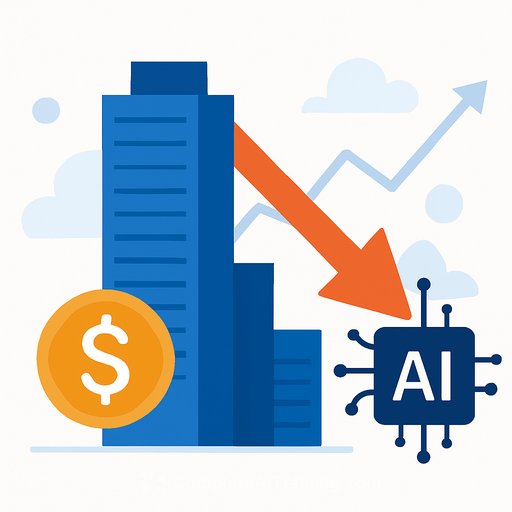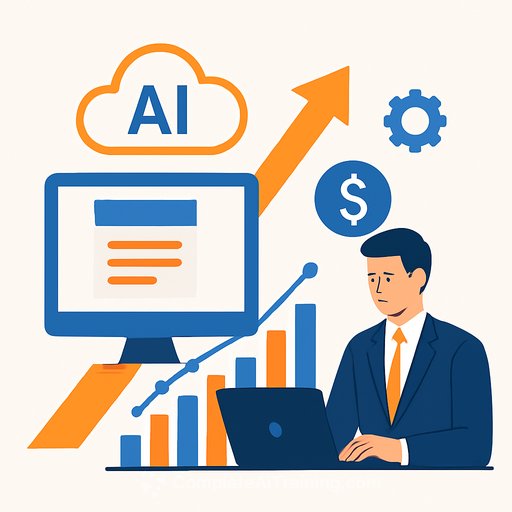Predict, prevent, personalize: AI's growing impact on insurance
Insurance was built to minimize risk. AI is now helping the industry do that with more speed, clarity, and accuracy across claims, underwriting, and customer experience. The result: faster decisions, fewer manual tasks, and interactions that feel more useful to customers.
The real shift is from transactional to value-driven. AI enables a two-way conversation that surfaces blind spots for carriers and breaks down jargon for consumers. It supports experts rather than replacing them, combining predictive intelligence with human judgment to improve outcomes and efficiency.
Where AI delivers results now
Claims is seeing the fastest wins. AI can gather and structure data, summarize files with citations, and assist with initial assessments. Tasks that took an hour drop to minutes, which shortens cycle times and reduces frustration for policyholders.
Underwriting is using AI to accelerate risk assessment and data summarization. Full automation is rare - nor is it the goal. The focus is on giving underwriters better inputs and more time for edge cases. On the front end, personalized quote recommendations and policy suggestions raise engagement and clarify options.
Most impact today lives in back-office operations where ROI is clear and risk is controlled. Claims automation, fraud detection, and underwriting support reduce cost and improve consistency. AI excels at digesting unstructured data and flagging issues for human review, so teams can focus on complex scenarios and high-touch moments.
From reactive to proactive
Traditionally, carriers studied losses after the fact. Predictive models enable proactive engagement: guidance on vehicle models with higher collision or repair costs, and homeowner insights about flood zones, storm exposure, or mitigation steps like reinforced foundations and impact windows. Better decisions upfront lower loss frequency and build trust.
Personalization scales, too. Coverage can match each customer's risk profile, assets, and needs, while the shopping process gets simpler with smarter suggestions, timely reminders, and ongoing insights. Through 2026, expect continued scaling in claims automation, underwriting support, and chatbots. Over the next five years, look for broader use cases: proactive risk prevention and embedded experiences that match products to risk tolerance in real time.
Risks, controls, and consumer trust
Insurance relies on transparent, deterministic processes. Generative AI is probabilistic and can produce unexpected outputs. That creates valid concerns: bias, explainability, and regulatory compliance. Human oversight remains essential, especially for policy sales and sensitive claims events.
Work closely with compliance, legal, and security. Adopt recognized frameworks such as the NIST AI Risk Management Framework (NIST AI RMF). Build audit trails, model monitoring, and clear escalation paths into every workflow.
Consumer expectations are clear: many want a person for critical moments. Recent polling shows a strong preference for human support after an accident and limited comfort using AI to manage policies. Design hybrid journeys - AI for speed and clarity, humans for empathy and judgment.
Implementation playbook
- Start small in high-volume, repetitive workflows: claims intake, document classification, FNOL triage, and loss summarization.
- Measure impact with hard metrics: handle time, cycle time, LAE, STP rate, leakage, and NPS/CSAT.
- Build governed data pipelines with PII controls, reference citations, and end-to-end auditability.
- Add guardrails: human-in-the-loop, role-based access, prompt/content filtering, red teaming, and bias/fairness testing.
- Train your people. Pair adjusters, underwriters, and agents with enablement sessions and hands-on playbooks.
- Roll out customer-facing use cases with clear disclosures, opt-outs, and easy escalation to a human.
- Review policies as models, data, and regulations change; update monitoring and controls accordingly.
Practical use cases to pilot now
- Claims: document ingestion, loss summarization with citations, damage triage, vendor routing, and subrogation opportunity flags.
- Fraud: anomaly detection and network analysis to surface suspicious patterns for SIU review.
- Underwriting: data extraction from submissions, risk summaries, appetite checks, and prefill.
- Distribution: quote recommendations, next-best-offer, and agent copilot for fast policy comparisons.
- Risk prevention: weather and CAT alerts with mitigation guidance; property insights using flood and wind exposure data (see the FEMA Flood Map Service Center: FEMA maps).
Metrics that matter
- Claim cycle time, LAE, STP rate, and leakage
- Fraud model precision/recall and SIU hit rate
- Underwriting turnaround time and quote-to-bind
- Customer satisfaction, retention, and complaint ratio
- Employee productivity and satisfaction
The bottom line
AI won't replace the human element - it augments it. Let AI handle the tedious, data-heavy work so adjusters, underwriters, agents, and CSRs can focus on complex judgment and empathy-driven moments. That's how you improve outcomes, reduce cost, and earn trust.
Treat adoption as a marathon. Start with proven use cases, measure relentlessly, scale what works, and keep humans in the loop.
Keep your team current
If you're building skills across underwriting, claims, and analytics, explore focused training by role: AI courses by job. For a structured overview, see current programs and certifications: popular certifications.
Your membership also unlocks:






